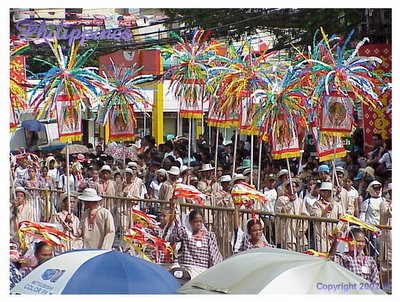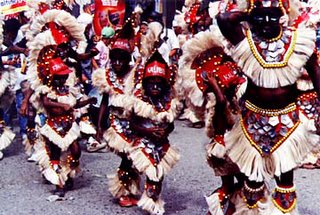
photocredit
The Sinulog is a dance ritual in honor of Santo Nino. It is held every year in Cebu City on the third Sunday of January.
This Sinulog dance which is the traditional and ritual dance in honor of Santo Nino is distinguished from the Ati-atihan from Panay Island.
Accompanied by the sound of the drums the sequences include the
all the time moving two steps forward followed by one step backward. Though the dance is already very old, the parade that characterized the festival was started onl in 1980.
Contrary to the belief of some, Sinulog was already danced by the locals in honor of their wooden statues in the period before the Cebuanos were baptized. Later on, after the image of the famous Santo Niño was brought to Cebu and the Catholic faith was established in the region, the dance was made a part of the early fiesta in honor of the Santo Nino.
While dancing, people are shouting petitions and thanksgivings to the Santo Nino. Shouting is necessary because the pilgrims have to be sure that they will be heard by the Santo Nino.
"Pit Senor! Senor Santo Nino."
SINULOG FESTIVAL,Mardi Gras,Sto.Nino,Cebu City












